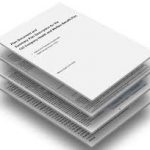It’s an easy requirement that many plan sponsors think they’ve accomplished, but they haven’t received the right one. We’re talking about an ERISA bond and often plan sponsors on a Department of Labor audit are told by the auditor that the general crime policy they have isn’t what they need for that ERISA bond.
The bond should be an ERISA bond and noted as such. It’s to protect plan assets from theft by plan fiduciaries. The bond must cover at least 10% of the assets handled by the specific fiduciaries, but can’t be less than $1,000. The maximum bond amount required is $500,000 (or $1 million if the plan holds employer securities). The amount of the bond must be based upon the highest amount of funds handled by the specific plan official for the previous year. If there is no previous-year data, the employer must estimate the amount of the bond using procedures contained the regulations. Employers can always choose to purchase bonds for more than those amounts.
The bond terms can be one year; however, bonds can be purchased for multiple years. If the bond covers multiple years, the fiduciary must check the amount of the bond each year to make sure whether coverage needs to be increased due to growing assets.
The bond must cover losses through larceny and theft, embezzlement, forgery, misappropriation, wrongful conversion, and willful misappropriation.
Note that plan fiduciaries are not permitted to have any financial interest in the entity from which the bond is purchased.







